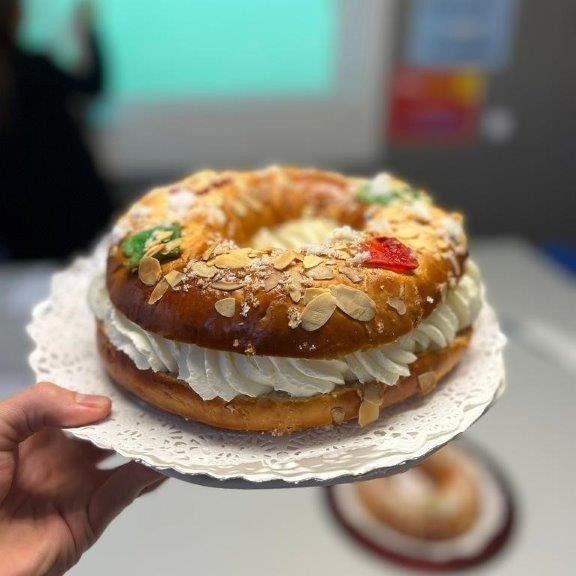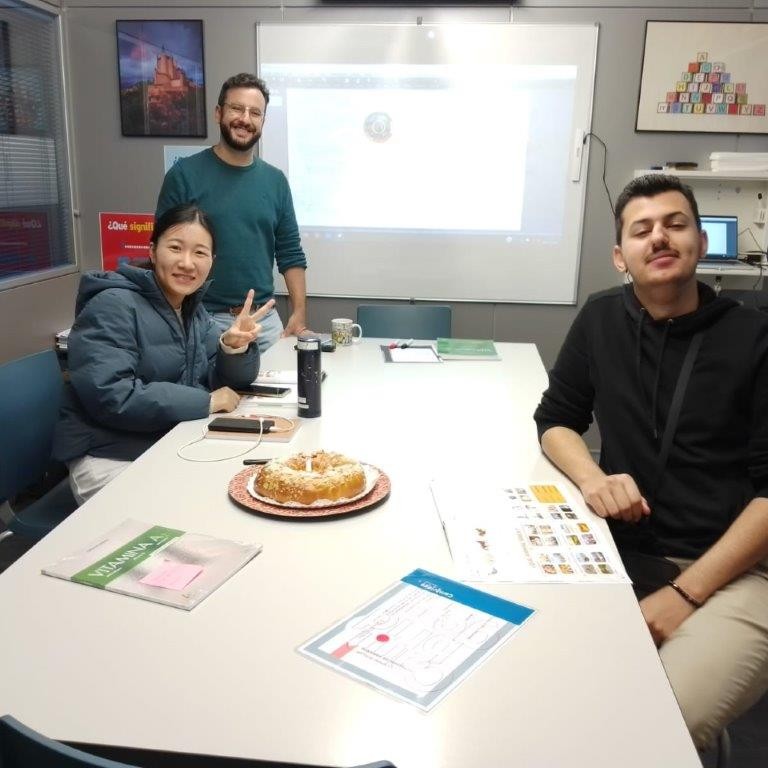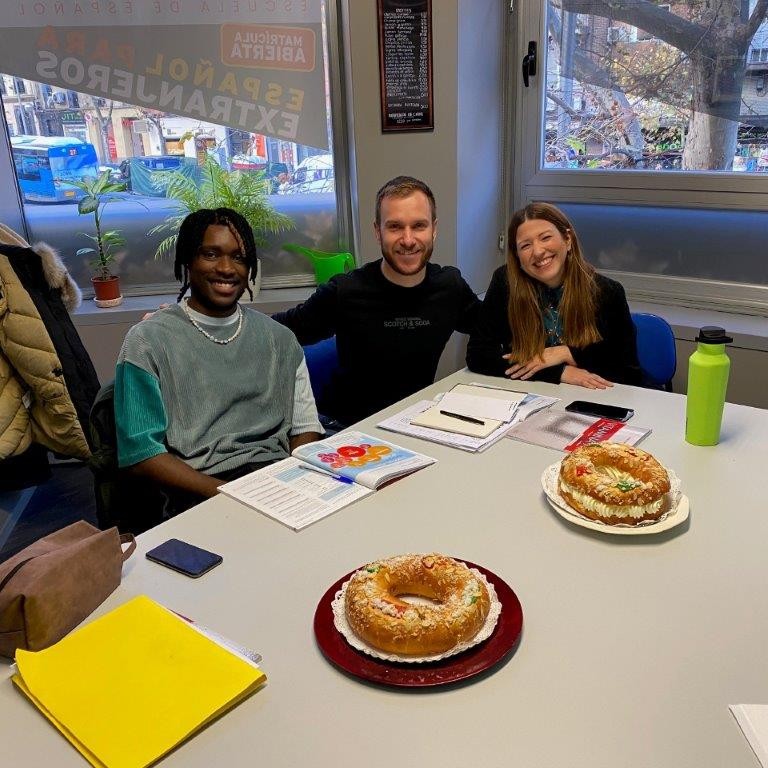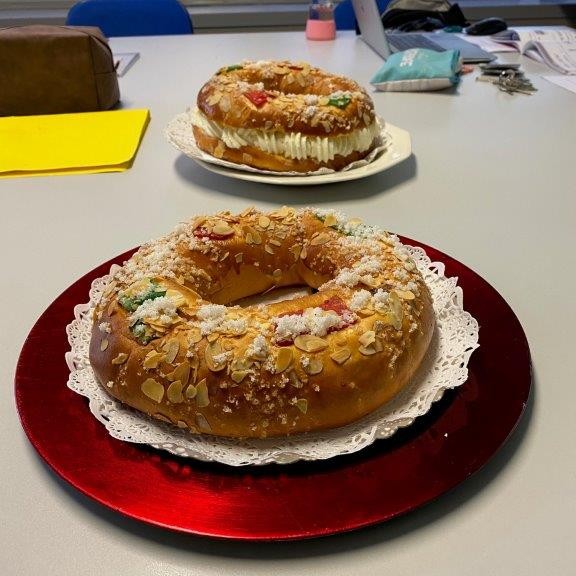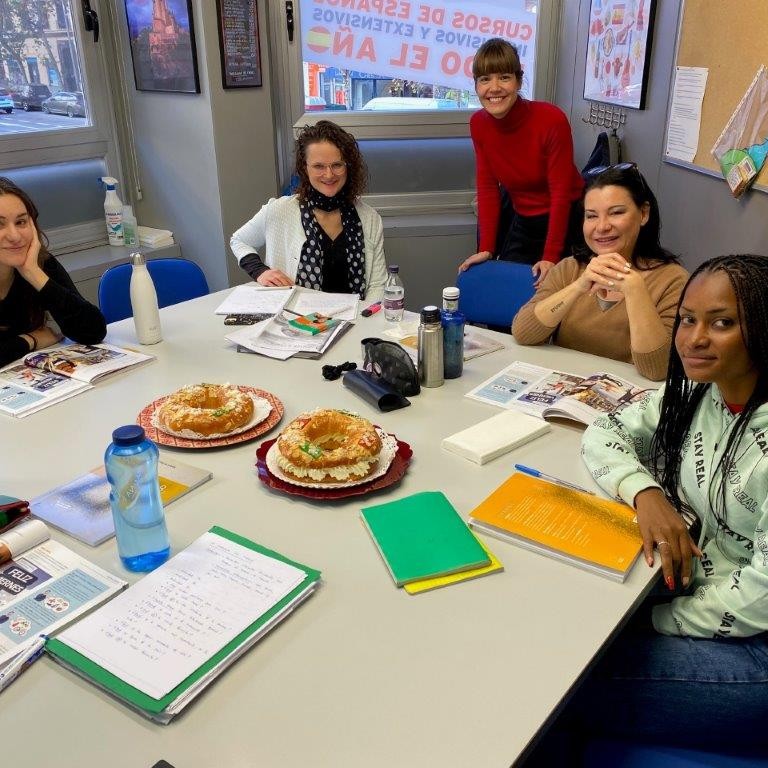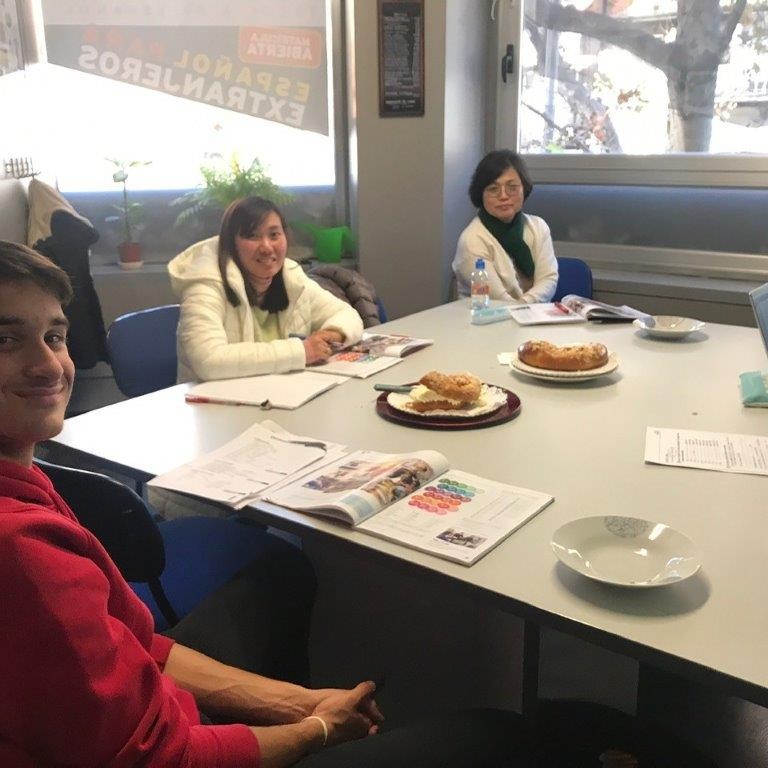En muchas partes del mundo, la Navidad está llegando a su fin. Los adornos se irán quitando y todos los regalos quedarán casi olvidados en algún rincón. Pero no aquí en España
Para los españoles, el 6 de enero es el día de los Reyes Magos, el más importante del periodo navideño, ya que es cuando los Reyes Magos entregan todos los regalos a niños y mayores. También es el último día del periodo navideño, lo que significa que todo el mundo tiene que volver al colegio y al trabajo poco después. Pero, ¿por qué el día 6 (y el 5) es la parte clave de la Navidad aquí? Averigüémoslo.
La idea de los Reyes Magos se basa, como muchos de ustedes saben, en la historia bíblica del nacimiento de Jesús. Como nos cuenta la Biblia, el rey Herodes se enteró de la noticia de la llegada de Jesús y envió a un grupo de desconocidos para que descubriesen el lugar del nacimiento y luego le informaran, a fin de poder él también visitarlo. Bueno, en realidad quería matar al pobre niño Jesús, ¡pero esa es otra historia! Los tres llegaron a su destino el 6 de enero, conocido como la Epifanía, por eso lo celebramos en este día. De todas formas, la versión original de los hechos no nombraba a los Reyes Magos, ni mencionaba que fuesen tres.
Escritos añadidos al Nuevo Testamento, pero que no forman parte de la Biblia, nos dieron más detalles sobre los Reyes Magos, y la idea de que fueran tres está vinculada a la Santísima Trinidad, de ahí que también fuesen tres los regalos que los Reyes entregaron a Jesús. Si avanzamos varios siglos, las referencias a los nombres de estos visitantes aparecen en el Auto de los Reyes Magos, un texto teatral del siglo XII clave en la historia de la literatura española. Aquí se hace referencia a Melchor, Gaspar y Baltasar (nombres de los tres Magos), que visitaron al Niño Jesús y le trajeron los famosos regalos oro, incienso y mirra. Sin embargo, la primera mención de los nombres de nuestros Reyes Magos aparece en un famoso mosaico del siglo VI en Italia.
In many parts of the world, Christmas is now coming to an end. The decorations will be being taken down, and all the presents almost forgotten about in a corner somewhere. But not here in Spain! For the Spanish, the 6th of January is el día de los Reyes Magos (Three Kings Day) which is the most important day of the Christmas period as it’s when los Reyes Magos (the Three Kings/Three Wise Men) deliver all the gifts for children and adults to enjoy. It’s also the last day of the Christmas period too, which means everyone has to go back to school and work soon after! But why is the 6th (and the 5th) the key part of Christmas here? Let’s find out.
Where does this all come from?
The idea of los Reyes Magos is, as many of you know, based on the Biblical story of the birth of Jesus. As we learn in the Bible, King Herod learned of the news of Jesus’ arrival and sent a group of unknown number to find the birthplace and then report back to him so he could also visit. Well, really he wanted to kill poor baby Jesus but that’s another story! The three arrived at their destination el 6 de enero (the 6th of January) known as la Epifanía (the Epiphany), therefore that’s why we celebrate on this day. Anyway, the original version of events didn’t name los Reyes Magos, nor did we know there were three of them.
Writings added in addition to the New Testament, but not part of the Bible itself, gave us more detail about los Reyes Magos, and the idea of there being three of them is linked to la Santísima Trinidad (the Holy Trinity) hence there being three gifts which the kings brought to Jesus. Skip forward several hundred years, and references to the names of these visitors appear in the Auto de los Reyes Magos (The Adoration of the Three Kings) which is a theatrical text from el siglo XII (the 12th century) and a key part of the history of Spanish literature. Here we see reference to Melchor, Gaspar, y Baltasar (the names of the Three Kings) who visited baby Jesus and brought the famous gifts of mirra (myrrh), oro (gold) and incienso (frankincense). However, the first ever mention of the names of our Reyes Magos came in a famous mosaíco (mosaic) from el siglo VI (the 6th century) in Italy!
¿Cuándo recibiremos los regalos?
Bien, ahora que ya conoces el origen de la idea de los Reyes Magos, veamos qué ocurre realmente los días 5 y 6 de enero.
Para preparar su viaje por España, y por todos los países que también los celebran, a los Reyes Magos les gusta mostrar a todo el mundo que van llegando durante la cabalgata de los Reyes Magos. Se celebra la noche del 5 de enero y es todo un espectáculo. En Madrid, la cabalgata está protagonizada por multitud de carrozas de vivos colores que recorren las calles de la capital y se retransmite en directo por televisión. Las últimas carrozas son las más especiales, ya que llevan a Melchor, Gaspar y Baltasar ante la multitud que espera verlos. Los ayudantes de los Reyes lanzan caramelos y otros dulces a todos los niños allí presentes, ¡lo que hace que sea aún más emocionante! Por la noche, una vez finalizada la cabalgata, los Reyes Magos van a entregar los regalos que todos han solicitado, para que los desenvuelvan con ilusión a la mañana siguiente.
Existen varias teorías sobre el origen de esta idea, una de las cuales sostiene que la primera cabalgata tuvo lugar en la localidad alicantina de Alcoy en 1866. Sin embargo, Granada, en el sur de España, afirma haber celebrado actos similares en la misma época, mientras que en Barcelona hay constancia de que se organizó una cabalgata en 1855. Lo importante, sin embargo, es que hoy en día se trata de una tradición firmemente arraigada en España y en varios otros países.
When do we get our presents?
Ok, so now you know the origin of the idea of los Reyes Magos, let’s look at what actually happens on the 5th and 6th of January.
To prepare for their trip around Spain, and all the other countries which also celebrate them, los Reyes Magos like to show everyone that they are coming during la cabalgata de los Reyes Magos (the Three Kings Parade). This happens on the evening of el 5 de enero (5th January) and is quite the spectáculo (spectacle). In Madrid, la cabalgata (the parade) features lots of very brightly coloured carrozas (floats) which are driven through the streets of the capital and televised live for everyone to watch on TV. The last few carrozas (floats) are particularly special, as they carry Melchor, Gaspar y Baltasar past the crowds of people waiting to catch a glimpse of them. The Kings’ helpers throw sweets and other candy to all the children watching which makes it even more exciting for them too! After the parade finishes, los Reyes Magos go and deliver everyone’s presents during the night to be eagerly unwrapped in the morning.
There are several theories as to where this idea comes from, one being that the first cabalgata (parade) took place in the Spanish town of Alcoy in Alicante in 1866. However, Granada in the south of Spain claims to have had similar events at the same time, whereas in Barcelona there is some evidence that a cabalgata (parade) had been organised in 1855. What matters though is that nowadays this is a firmly established tradition in Spain and several other countries.
El roscón de Reyes
Además de abrir los regalos, el 6 de enero también se degusta el roscón de Reyes. En realidad no es un roscón como tal, sino más bien una masa dulce redonda parecida al pan con un agujero en el centro. El roscón se decora con frutas confitadas y puede ir con o sin relleno de nata (aunque en los últimos años también se han visto otros rellenos, como chocolate). La tradición es cortar el roscón en trozos y compartirlo con toda la familia. Mientras se come el trozo, hay que intentar encontrar la figurita escondida (a menudo uno de los tres Reyes Magos o Jesús) y evitar el haba de la mala suerte. Si consigues una figurita, tendrás buena suerte para el año que viene, pero si encuentras el haba, ¡tendrás que pagar el roscón!
Y después de tanta emoción y dulces, la Navidad llega a su fin un año más. Pero no desesperes, ¡sólo faltan 11 meses para la próxima! Así que, si decides venir a estudiar español a Madrid, te recomendamos que te quedes en diciembre y enero para vivir unas Navidades españolas auténticas. Es una experiencia cultural que nunca olvidarás y de paso aprenderás mucho español. Así que, ¡Feliz día de los Reyes! – Disfruta de tus regalos y pasa unas fantásticas fiestas.
El roscón de Reyes
As well as opening presents, the 6th of January is also the day to enjoy el roscón de Reyes (Three Kings Cake). It’s not really a cake as such, but more of a sweet bread-like round dough with a hole in the middle. Un roscón is decorated with candied fruit, dried fruit and can be unfilled or filled with cream. The tradition is to cut un roscón into pieces and share it with all the family. While eating your piece, you need to try to find the hidden figurita (little figure – often one of the three wise men or Jesus) and avoid the unlucky haba (bean). If you get una figurita then you’ll have good luck for the coming year, but if you find la haba (the bean) you’ll have to pay for el roscón!
And after all that excitement and cake, Christmas comes to an end once more. But don’t despair, it’s only another 11 months until the next one! So, if you decide to come and study Spanish here in Madrid we recommend staying in December and January to experience unas Navidades españolas auténticas (an authentic Spanish Christmas). It’s a cultural experience you’ll never forget and you’ll learn lots of Spanish along the way. So, ¡Feliz día de los Reyes! – go enjoy your gifts and have a fantastic end to the festive period!

